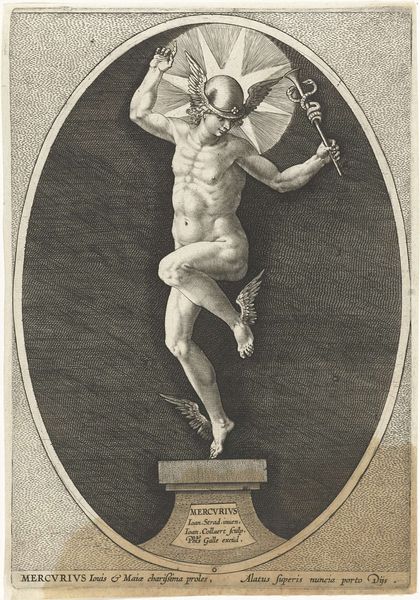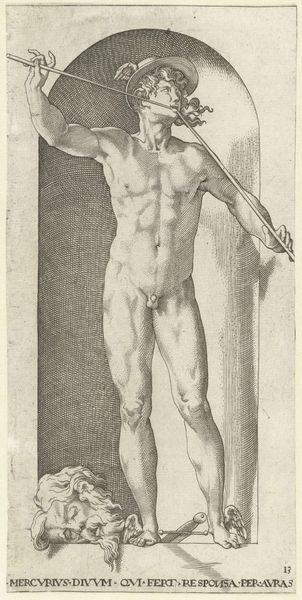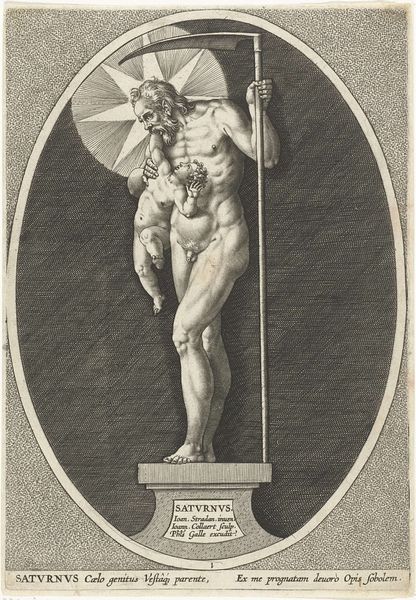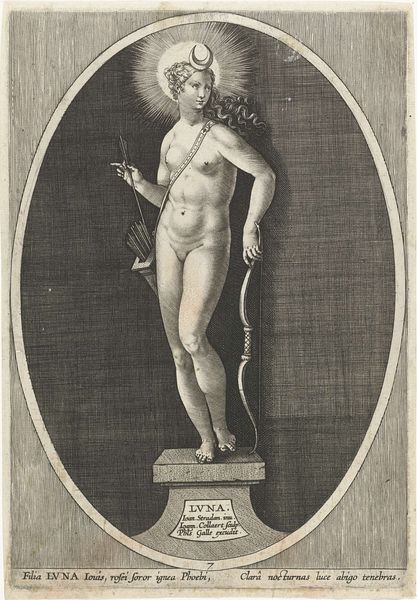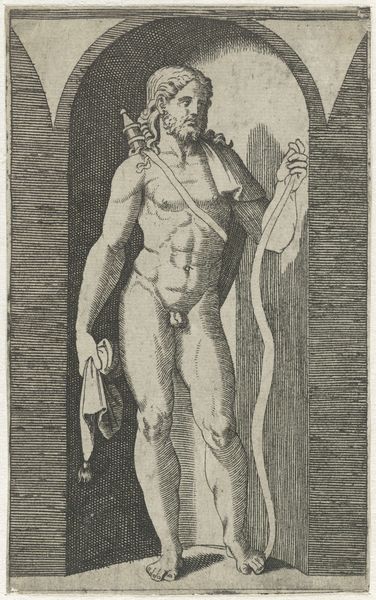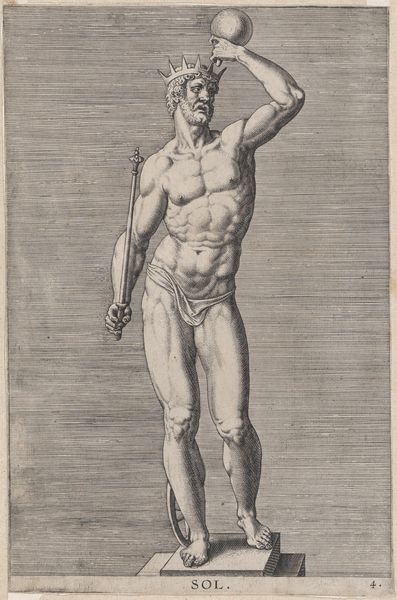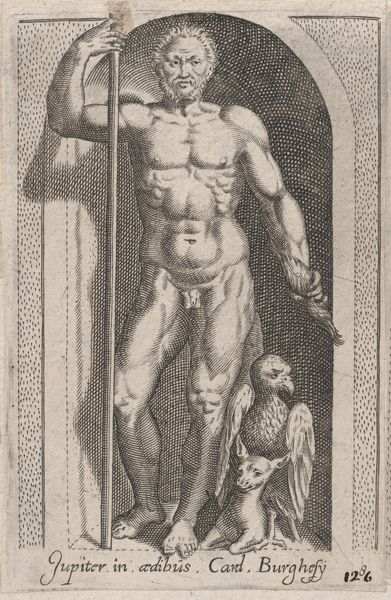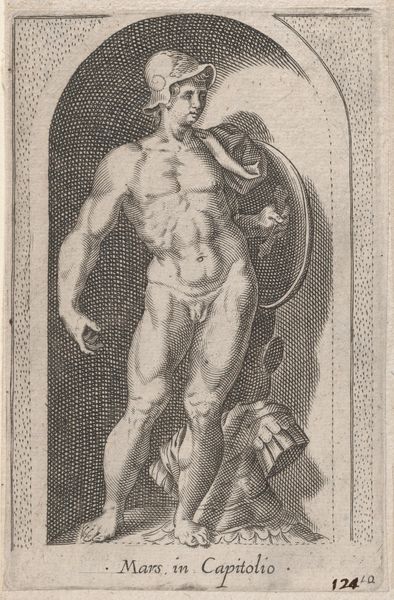
print, engraving
# print
#
mannerism
#
figuration
#
mythology
#
nude
#
engraving
#
statue
Dimensions: height 195 mm, width 138 mm
Copyright: Rijks Museum: Open Domain
Curator: Take a moment with this engraving, titled "Mars," made after 1585, currently residing here at the Rijksmuseum. Jan Collaert the Younger created this print, after a design by Jan van der Straet, also known as Stradanus. Editor: It’s startling. The figure’s muscularity is so emphasized, especially for a print. What about the artist's intention can you tell me, in terms of the image making, how would you say its effect functions within our view? Curator: Indeed. As a Mannerist work, Collaert highlights an idealized and exaggerated human form, typical of the period. Mythological figures provided artists with license to explore idealized, often nude forms. Here, we see Mars elevated – literally – as the embodiment of war. The print itself becomes a tool for disseminating power. It speaks to cultural ideals prevalent during the late 16th century and a desire for a return to Classicism, reshaped and reinterpreted through a decidedly European lens. Editor: Right, the means of production are crucial. It's an engraving, painstakingly etched on a copper plate. This level of detail necessitates time, skill, and artisanal knowledge, it contrasts the brute force of Mars depicted with delicate material production of the piece. This tension is compelling! Curator: Yes, and engravings, like this one, played an essential role in disseminating artistic ideas, wasn’t simply about creating a single image, it's about reproducing and sharing visual concepts widely through printmaking technology of the period. Think of it as early forms of digital content. Editor: Absolutely. I am left pondering the social and political mechanisms governing production, patronage and workshops that defined not only an individual practice but material conditions that enable making and consuming an image such as this in early modern Europe. Curator: It shows how the power of art resides as much in its dissemination and socio-political value as in its immediate aesthetic impact. It really forces you to reflect upon the meaning of imagery, especially with the use of Greco-Roman imagery being so heavily promoted by certain royal houses to strengthen legitimacy and perception of control. Editor: Precisely, the availability of raw materials for both printing, tools involved to do so along with a clear desire shows complex human agency in operation here. Curator: Definitely. Let's move on.
Comments
No comments
Be the first to comment and join the conversation on the ultimate creative platform.
